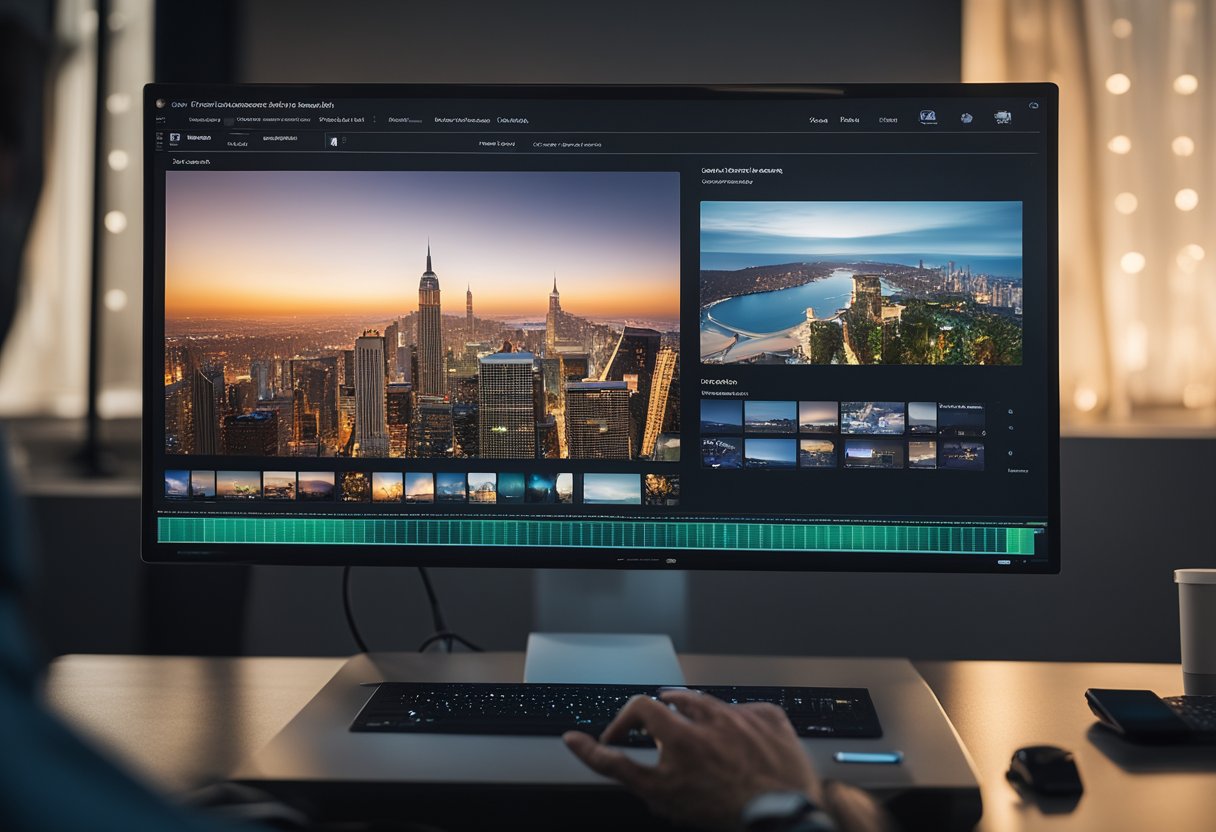As technology continues to evolve and become more accessible, VR is emerging as a powerful tool for creating immersive online experiences. From streaming concerts to conferences, educational courseware, and virtual tours. The possibilities are practically endless. In this blog post, we’ll discuss how you can start a VR livestream and explore the advantages of setting up a successful VR livestream that will take your audience’s engagement levels to new heights
How to start a VR livestream.
- Prepare VR equipment.
- Set up VR software.
- Connect to a reliable internet source.
- Launch live streaming software.
- Configure stream settings.
- Start VR game/application.
- Begin the livestream.
Prepare VR Equipment:
Before diving into the virtual world, ensure your VR headset and controllers are charged and ready.
Double-check for any necessary updates in your VR hardware to ensure optimal performance during the stream. This step is crucial for providing high-quality VR video content to your audience.
Set Up VR Software:
Install and configure the VR software on your computer. This software acts as the bridge between your VR equipment and your PC, allowing you to run VR applications smoothly. Ensure your VR drivers are up-to-date for a seamless experience.
Connect to a Reliable Internet Source:
For a glitch-free VR livestream, connect to a high-speed and stable internet source. A wired Ethernet connection is ideal, but if you must use Wi-Fi, ensure it has a strong signal with minimal interference.
A laggy connection can ruin the immersive experience for your viewers during live broadcasting of VR events.
Launch Live Streaming Software:
Choose your preferred live streaming software, such as OBS (Open Broadcaster Software) or XSplit.
These streaming software solutions are essential for capturing and encoding your VR gameplay. Configure them to recognize your VR setup and capture your virtual reality world.
Configure Stream Settings:
Fine-tune your stream settings within the streaming software. Adjust video quality, frame rate, and audio settings to provide the best VR video experience for your audience. Ensure that your VR headset is correctly detected in the software settings.
Start VR Game/Application:
Launch the VR game or application you want to showcase during your livestream. Make sure it’s optimized for VR live streaming, as not all VR content works seamlessly with streaming software. Explore the virtual realm a bit before going live to ensure everything runs smoothly.
Begin the Livestream:
Now, it’s time to hit that “Go Live” button. Engage with your viewers, use a professional tone, and provide commentary to make the VR live streaming experience relatable.
Interact with your audience by responding to comments and questions during your live broadcasting of VR events.
What is VR Livestream?
VR Livestream is an innovative form of live broadcasting that harnesses the full potential of virtual reality (VR) technology to provide immersive experiences to viewers.
In VR Livestream, creators use VR cameras to capture 360-degree video content and then stream it in real-time to online platforms, allowing audiences to virtually step into live events or environments.
This technology goes beyond traditional video streaming, as it enables users to interact with the virtual world and enjoy a heightened sense of presence.
How Does VR Livestream Work?
VR Live Streaming works by using specialized VR cameras to capture a 360-degree view of the surroundings.
This captured video content is then processed and streamed in real time using streaming software. To achieve this, a significant amount of computing power is required to handle the rendering of the immersive VR video streams.
However, bandwidth limitations can be a challenge, as transmitting high-quality VR video content demands substantial internet resources.
Viewers, equipped with VR headsets or compatible devices, can access the VR Livestream and experience live events or explore virtual environments as if they were physically present.
What Are the Benefits of VR Livestream?
VR Livestream offers numerous benefits. It creates a sense of presence and engagement that traditional video streaming cannot match.
Viewers can participate in live events remotely, enhancing accessibility. Creators can provide immersive and interactive experiences, fostering a deeper connection with the audience.
VR Live Streaming leverages better tools and technology to deliver stunning visuals and unlock new possibilities for content creation.
What Are the Challenges of VR Livestream?
Despite its advantages, VR Live Streaming presents challenges. Bandwidth limitations can hinder the seamless delivery of high-quality VR content.
The cost of VR equipment and computing power can be prohibitive for creators. Moreover, ensuring a professional tone and avoiding technical glitches during live broadcasts require careful planning and expertise. Overcoming these hurdles is crucial for successful VR Live Streaming.

What Equipment Do I Need for VR Livestream?
To start VR Live Streaming, you’ll need specialized VR cameras capable of capturing 360-degree video, a powerful computer with adequate computing power, VR headsets for monitoring, and streaming software to broadcast your content.
A stable internet connection with sufficient bandwidth is essential for a smooth streaming experience.
How Do I Set Up My Equipment for VR Livestream?
Setting up your VR Livestream equipment involves connecting the VR camera to your computer, configuring the streaming software, and ensuring the VR headsets are functioning correctly.
Proper calibration and testing are crucial to deliver high-quality immersive experiences to your audience.
What Are Some Tips for VR Live Streaming?
To excel in VR Live Streaming, maintain a professional tone and engage with your audience during live broadcasts.
Plan your content well, and promote your streams in advance. Ensure optimal lighting and audio quality, as these factors significantly impact the viewer’s experience. Interact with viewers in real-time, enhancing their sense of presence.
What Are Some Common Troubleshooting Tips for VR Live Streaming?
Common VR Live Streaming issues include lag, audio problems, or camera calibration errors.
Troubleshooting involves checking your internet connection, updating software, and verifying hardware connections.
Regularly test your equipment and have backup plans in place to address technical difficulties during live broadcasts.
How Can I Find VR Live Streams to Watch?
To discover VR Livestreams, explore popular platforms such as Facebook Live, YouTube VR, or dedicated VR streaming websites.
Join VR communities, follow VR content creators, and subscribe to channels that offer immersive experiences.
Engaging with these platforms will help you stay updated on the latest VR Livestreams.
How Can I Create My Own VR Livestreams?
To create VR Livestreams, acquire the necessary equipment, develop content ideas, and master streaming software.
Practice setting up and conducting test streams before going live. Engage with your audience and continuously improve your VR Livestreaming skills to provide captivating experiences.
What Are Some of the Best VR Live Streaming Platforms?
Popular VR Live Streaming platforms include Facebook Live, YouTube VR, and Twitch VR.
These platforms offer features for both creators and viewers to engage with immersive content. Choosing the right platform depends on your target audience and content goals.
What Are Some of the Most Popular VR Live Streaming Channels?
Several popular VR Live Streaming channels cover a range of content, from gaming to live events.
Some well-known ones include “VRChat,” “Beat Saber Live,” and “Oculus Events.” These channels attract large followings due to their engaging and immersive content.
How Can I Monetize My VR Livestreams?
Monetizing VR Live Streams can be achieved through sponsorships, ads, virtual goods, and donations from viewers.
Building a dedicated audience and offering unique and immersive content will attract potential revenue streams. Patforms like Patreon can help creators secure ongoing support from fans.
Can You Livestream on VR?
Yes, you can livestream in virtual reality (VR). VR Live Streaming allows you to broadcast immersive 360-degree video content in real time to online audiences.
By using specialized VR equipment and streaming software, you can provide viewers with a sense of presence and engagement that traditional livestreaming cannot achieve.
What Is the Best VR Camera for Live Streaming?
The choice of the best VR camera for live streaming depends on your specific needs and budget.
Some popular options include the Insta360 Pro 2, GoPro MAX, and Kandao QooCam 8K. These cameras offer high-resolution 360-degree video capture and compatibility with live streaming software, ensuring top-quality VR livestreams.




